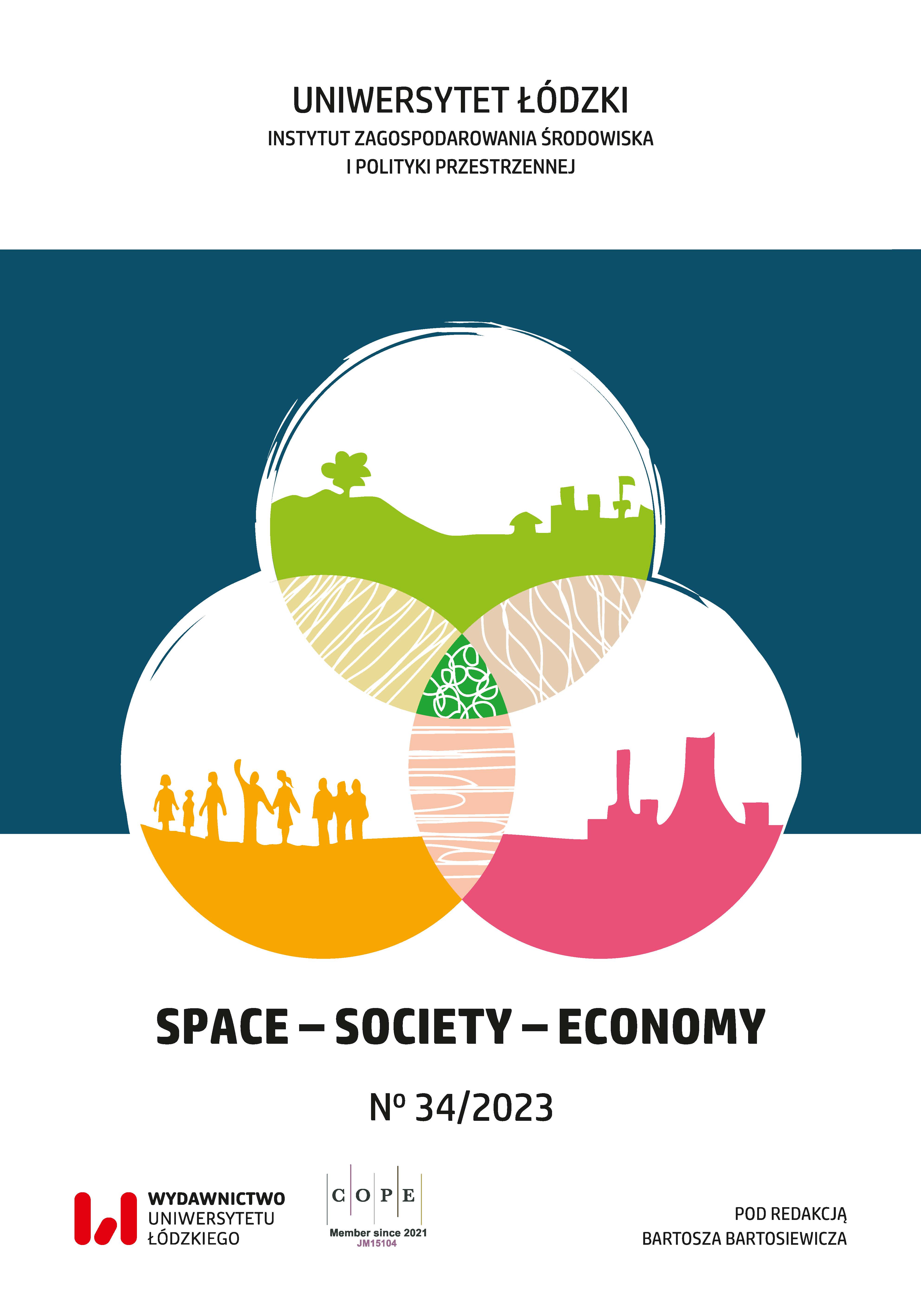Model struktury funkcjonalno-przestrzennej w strategii rozwoju jednostki samorządu terytorialnego lub obszaru funkcjonalnego
Territorial dimension and spatial structure within development strategy for a local community, region or functional area
Author(s): Dominik DrzazgaSubject(s): Regional Geography, Transport / Logistics
Published by: Wydawnictwo Uniwersytetu Łódzkiego
Keywords: spatial development; spatial management; functional and spatial structure; spatial pattern; territorial dimension; strategy; local development strategy; regional development strategy; planning; spatia
Summary/Abstract: This article deals with issues relating to the procedures for developing strategies for local communities, municipalities, and regions in the context of the contemporary postulates of a more integrated approach to development planning processes as well as taking into account the spatial dimension within territorially-oriented local and regional strategies. A concise discussion of the theoretical and formal premises of integrated planning in local communities and regions was made, paying attention in the first place to the fundamental differences in the functioning of private and public organisations, resulting in the necessity to adapt the instruments of strategic planning to the specific objectives of public sector organisations. It was also pointed out that municipalities, local or regional communities are public organisations of a very special nature (so-called “macro” level) and so a territorial self-government community is a kind of “organisation of other organisations”, i.e. a group of various entities related to each other by social relations and economic dependencies as well as sharing particular geographical area (land) and its natural and anthropogenic resources. It is this feature that implies the need to take into account the spatial dimension of development processes in the strategic planning of local and regional self-government entities, and thus also to appropriately address these issues in the strategic document. Such an approach – i.e. integrating the socio-economic dimension of development processes with the need to act for the protection of the natural environment and taking into account the spatial dimension of both development and protection activities – is also consistent with, and directly results from, the contemporary paradigm of sustainable development. With regard to the formal premises and practice of strategic planning of local and regional development, its evolution was indicated, consisting in the transition from directive planning (before 1989) to indicative planning, the use of local government strategies mainly as a tool for obtaining external financial resources (after Poland’s accession in 2004 to the European Union), adopting the legal basis for strategic development planning (2006), developing assumptions for the reform of the development planning system towards a more integrated approach (2009), up to the introduction (2020) of changes in the legal provisions regulating the methods of developing local and regional strategies, obliging local governments to include the spatial dimension in it. It was pointed out that despite the legislative changes of 2020, a dichotomous planning system still operates in Poland, in which a local or regional strategy is developed (albeit with spatial dimensions) and (based on separate regulations) master plans of the spatial pattern and land structure of a given local or regional territory. As from 2020, it became obligatory: 1) to include in the development strategies of local communities and regions the so-called model of the functional and spatial structure/pattern; 2) to formulate findings and recommendations in the field of managing spatial policy in the local community or region; as well as 3) to designate areas of strategic intervention. However, the legal regulations do not provide detailed guidelines on these issues, so it is reasonable to discuss the methodology of developing the model of the functional and spatial structure/pattern and its inclusion in the local or regional development strategy as its integral element. With this in mind, the article conceptualises the model of the functional and spatial structure/pattern as a spatial development that meets public interests and is to contribute to the growth of territorial capital. The essential part of the article is – apart from the explanation of the very essence of the model of the functional and spatial structure/pattern – the description of the author’s recommendations regarding what procedures which should be used when developing a local or regional strategy in order to develop the model of the functional and spatial structure/pattern of a local community, municipality or region on the basis of the local government development objectives set in the planning process, as well as adopted tasks and strategic projects. In the final part of the article, reference is made to the issue of formulating (based on the model of the functional and spatial structure/ pattern) arrangements and recommendations in the field of managing spatial policy in local or regional government, indicating in this respect the need to reform the spatial planning system, which ought to consist in the introduction of specialised spatial instruments.
Journal: Space – Society – Economy
- Issue Year: 2023
- Issue No: 34
- Page Range: 7-29
- Page Count: 23
- Language: Polish

